Crucial MX200 (250GB, 500GB & 1TB) SSD Review
by Kristian Vättö on May 22, 2015 8:00 AM EST- Posted in
- Storage
- SSDs
- Crucial
- MX200
- Micron 16nm
Sequential Read Performance
For full details of how we conduct our Iometer tests, please refer to this article.
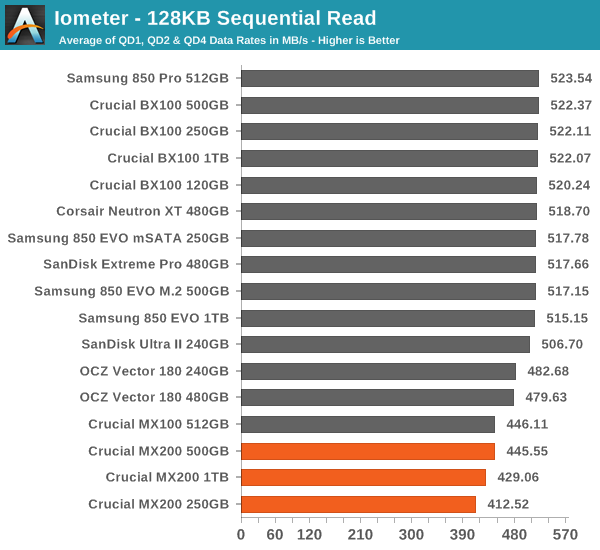
Sequential read performance hasn't been a strength of Crucial's Marvell based SSDs and the MX200 doesn't change that.
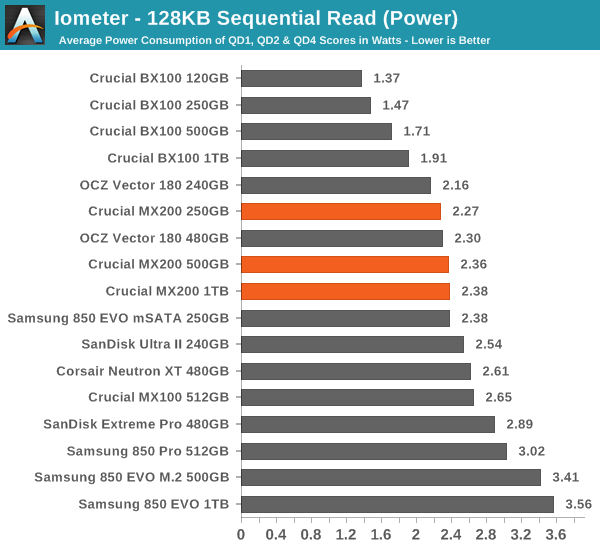
Power efficiency isn't too good either because the performance is low, yet the power draw is quite average.
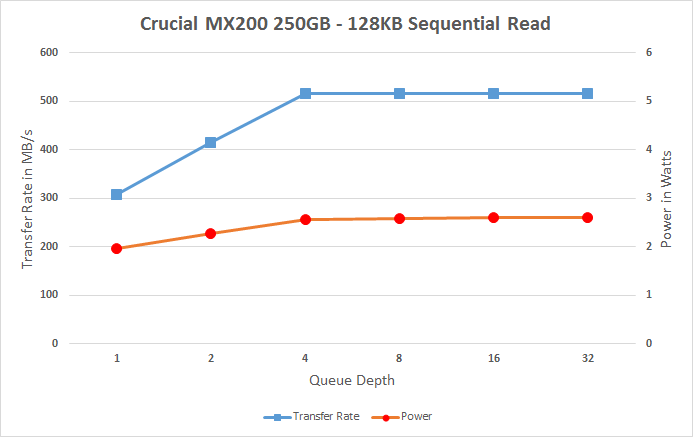 |
|||||||||
The scaling graph reveals why: the performance at QD1 and QD2 is simply terrible compared to other drives. Most drives max out the SATA 6Gbps interface at QD2 by providing over 500MB/s, but the MX200 requires QD4 before it reaches its full potential.
Sequential Write Performance
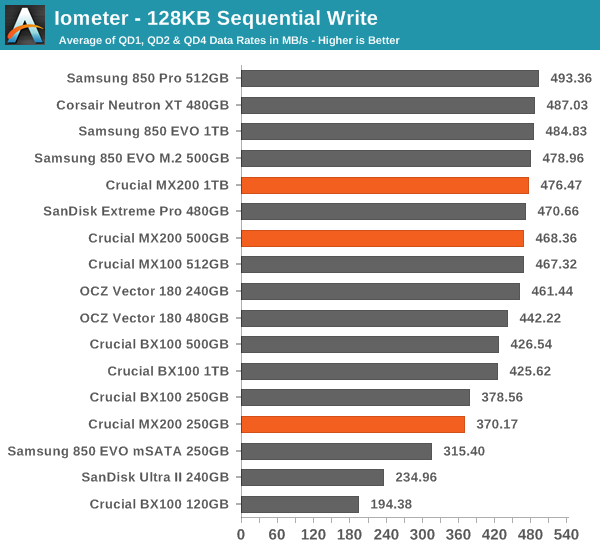
Fortunately sequential write performance is much better. The 250GB does leave a bit to be desired with its SLC cache, but compared to competing drive in the same capacity class it does well.

Power efficiency is also decent.
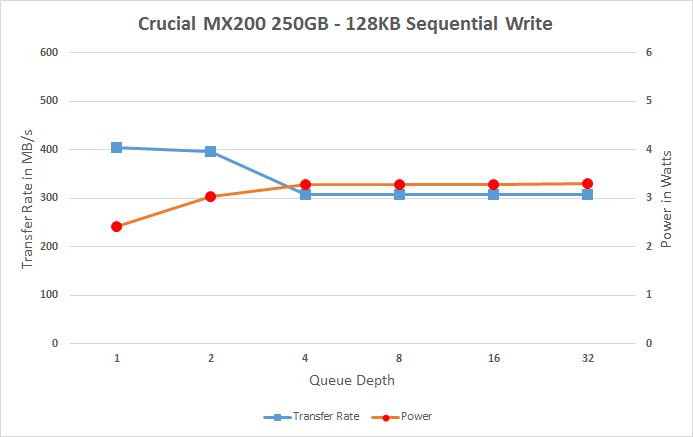 |
|||||||||
Again the full SLC cache shows its impact, but now the slowdown starts at QD2 already (sequential writes are faster than random, so the cache is filled quicker). The larger capacities scale well and reach their maximum throughput at QD2.










62 Comments
View All Comments
busky2k - Friday, May 22, 2015 - link
Thanks for the honest review. Its a shame the MX200 doesn't excel like its brethren.romrunning - Friday, May 22, 2015 - link
Agreed. That's why I appreciate seeing independent tests of manufacturers' claims. Crucial/Micron just showed me why I'll still buy Samsung over their drives. It's a shame; I used to recommend the MX100 as the best value drive. Now it's the 850 EVO all the way for value drives.sabot00 - Friday, May 22, 2015 - link
I feel the BX100 at the very least deserves consideration. The 850 Evo is not a blanket recommendation, especially for laptops where power consumption is important. The BX100 is probably the best mix of price / performance / power right now.Stoatie - Friday, February 12, 2016 - link
Then what you really want to look at is energy use for a given IO task. Consider the 512GB EVO and BX:EVO: ~350MB/s @ 1.6W. = 218.75 MB/J =
BX100: 300MB/s @ 1.4W = 200 MB/J
For a given task the EVO will finish faster and do it with less total energy use.
leexgx - Tuesday, May 24, 2016 - link
but overall BX100 uses less power (i norm aim to buy BX100 for laptops unless SED drive is required then its norm intel 1000 or 2000 drive)Samus - Friday, May 22, 2015 - link
Considering the price of the M500's (960GB model <$300) I still use those almost exclusively unless the MX\BX100's happen to be cheaper. Been very happy with Crucial drives since the C300, very few issues and decent performance for the price. Support is now excellent with their "storage executive" software making firmware updates relatively painless.emn13 - Friday, May 22, 2015 - link
Given the fact that most workloads won't cause noticable differences between high end and low end drives, the price, and the power loss protection mean that the ancient m500 is probably a better choice both featurewise and pricewise than its newer, faster competitors for most PCs.leexgx - Saturday, May 23, 2015 - link
Don't like the idea of DWA drives twice the amount of writes and silly more power draw (the bx100 is a good way on power just lacks FDE witch is unfortunate) mx200 is not on my list of drives to getedlee - Friday, May 22, 2015 - link
i am not sure why crucial stopped producing m550, it performs better than mx100 and mx200 series, and was true successor to the legendary m4 driveDanNeely - Friday, May 22, 2015 - link
Are the flash chips and controller it uses still available? If either has been discontinued they wouldn't have a choice. Even if the flash was available, but just significantly more expensive; keeping a competitive price would likely force their hand.